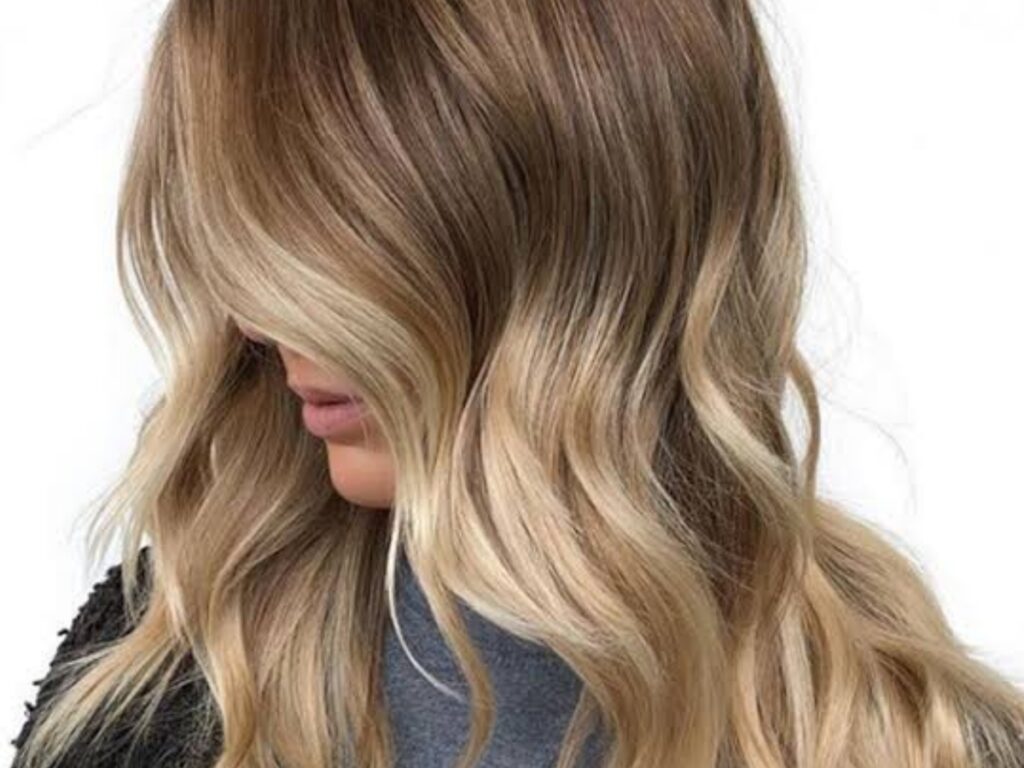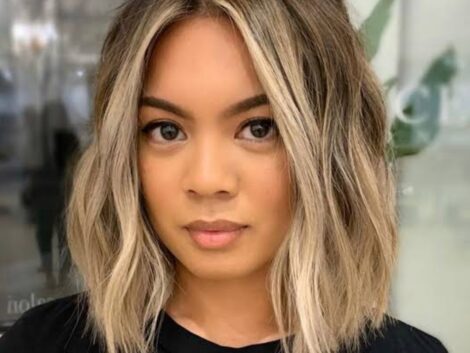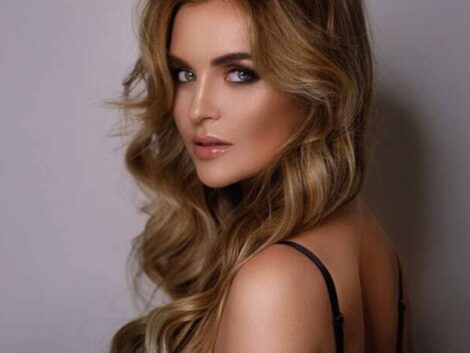Balayage is a hair coloring technique that creates natural-looking, sun-kissed highlights. It involves hand-painting or sweeping the hair with color, typically using a brush and paddle, rather than traditional foiling or cap highlighting methods. The word “balayage” itself is derived from the French word meaning “to sweep” or “to paint.”
Here’s a step-by-step guide on how balayage is typically done:
Consultation
Start with a consultation with a professional hair colorist. Discuss your desired look, the placement of highlights, and the overall effect you want to achieve.
Sectioning
The hair is usually sectioned into manageable portions to ensure even application and to target specific areas. The colorist may use clips or hair ties to separate the hair.
Mixing the color
The colorist prepares the lightening or hair color product based on the desired shade and the natural color of your hair. Balayage often involves using a lightener or a low-volume developer to achieve a subtle and natural result.
Application
Using a brush or paddle, the colorist begins painting the hair in sweeping motions, from mid-lengths to ends. The color is usually applied more heavily towards the ends and sparsely towards the roots for a gradient effect. The colorist may also blend and feather the color to create a seamless transition.
Processing
Once the color is applied, it is left to process or develop according to the manufacturer’s instructions. The processing time can vary depending on the desired result, the starting color of the hair, and the lightning product used.
Toning (optional)
After the lighting process, the colorist may apply a toner to adjust the tone of the highlights and eliminate any unwanted brassiness or undertones. This step helps achieve a more refined and customized look.
Washing and conditioning
The hair is shampooed and conditioned to remove any residual color or lightening product. The colorist may use products specifically formulated for color-treated hair to maintain and enhance the vibrancy of the highlights.
Styling
Finally, the hair is styled as desired, showcasing the balayage highlights. The colorist may use techniques like curling, straightening, or adding texture to enhance the overall look and dimension of the hair.
It’s important to note that balayage is a technique that requires skill and experience, so it’s recommended to consult a professional hair colorist who specializes in balayage to achieve the best results.
What is done during a balayage?
During a balayage session, several steps are typically followed to achieve the desired hair color effect:
Consultation
The process begins with a detailed discussion between you and the stylist. They will take the time to understand your preferences and analyze factors such as your hair type, texture, previous coloring treatments, and skin tone. This consultation helps determine the most appropriate balayage technique for you.
Sectioning
To ensure precise and even application, the hairstylist will divide your hair into sections. This allows them to work methodically, ensuring that every strand is carefully treated.
Hand-painting
Unlike traditional highlighting methods, balayage involves hand-painting the color onto the hair. The hairstylist will use a freehand technique, skillfully sweeping the color onto specific sections of your hair. This manual approach allows for a more personalized and natural-looking result, as the color is strategically placed to create dimension and depth.
Gradual application
The color is applied gradually, starting from the mid-lengths or ends of the hair and working upwards. This technique aims to mimic the way the sun naturally lightens the hair, resulting in a sun-kissed and effortlessly blended effect.
Processing time
Once the color has been applied, it needs time to develop and penetrate the hair shaft. The hairstylist will determine the appropriate processing time based on factors such as your hair’s porosity and the desired level of lightness. During this time, you may relax and wait, often with the color covered or wrapped in foil to prevent it from drying out.
Washing and styling
After the processing time, your hair will be washed to remove any excess color. The stylist may use specialized products to maintain the vibrancy and health of your hair. Finally, they will style your hair, showcasing the beautifully blended balayage highlights and ensuring a polished finish.
Remember, the specific steps and techniques involved in a balayage session can vary depending on the stylist and the individual’s hair needs. It’s always best to consult with a professional hairstylist to determine the most suitable approach for your desired balayage look.
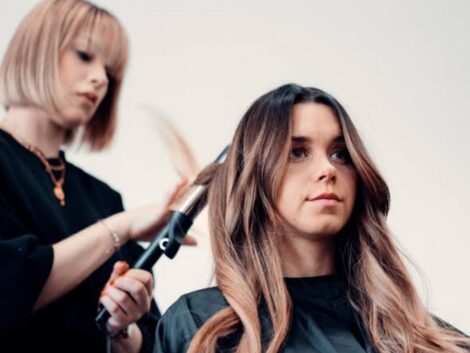
How long does the balayage process take?
The duration of the balayage process can vary depending on several factors, including the desired result, starting hair color, hair length, and the stylist’s technique and speed. Generally, a balayage appointment can take anywhere from one to three hours.
Balayage is a hand-painting technique that creates natural-looking, sun-kissed highlights. The stylist strategically applies the color to specific sections of the hair, focusing on the mid-lengths and ends while leaving the roots untouched for a softer, more blended effect. Since the color is painted by hand, it typically takes longer than traditional foil highlighting techniques.
During the appointment, the stylist will first consult with you to determine the desired look and assess your hair. They will then apply the color and allow it to be processed, which can take anywhere from 30 minutes to an hour, depending on the desired lightness and starting hair color. After the processing time, the color is rinsed out, and toner may be applied to achieve the desired tone or to neutralize any unwanted undertones. Finally, the hair is washed, conditioned, and styled.
It’s important to note that the above time estimates are general guidelines, and actual timing can vary based on individual circumstances. It’s best to consult with your stylist for a more accurate estimate based on your specific hair and desired outcome.
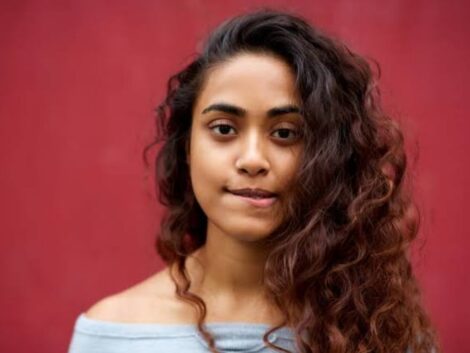
What are 3 techniques used on balayage?
Balayage is a hair coloring technique that creates natural-looking highlights by hand-painting color onto the hair. Here are three common techniques used in balayage:
Freehand Painting
This is the foundation of balayage and involves the stylist using a brush or hand to apply the hair color directly onto the hair strands. The color is typically applied in a sweeping motion, starting from the mid-lengths to the ends, creating a soft and blended look. The stylist has more control over the placement of the color, allowing for customized and personalized results.
Color Melting
Color melting is a technique used to achieve a seamless blend between different shades or tones. It involves transitioning smoothly from one color to another without harsh lines or visible distinctions. In balayage, color melting is often used to create a natural-looking gradient effect by seamlessly blending the highlighted strands with the base color of the hair.
Feathering or Smudging
Feathering, or smudging, is a technique used to soften the lines between the colored and natural hair strands. After the color is applied, the stylist may use a blending brush or fingers to gently feather or smudge the color, creating a more diffused and natural appearance. This technique helps to avoid any harsh demarcation lines and allows the color to blend seamlessly with the rest of the hair.
It’s important to note that balayage is a versatile technique, and different stylists may use variations or combinations of these techniques based on their expertise and the desired outcome.
Does a balayage include roots?
In this technique of hair coloring, highlights are done by hand-painting in a sweeping motion. Traditionally, balayage is focused on the mid-lengths and ends of the hair rather than the roots. The goal is to achieve a soft and blended effect with a gradual transition from darker roots to lighter ends.
However, there are variations of balayage, such as “rooted” or “root smudge” balayage, where the colorist may incorporate some color or shading at the roots to create a more seamless blend. In these cases, the colorist may apply a darker shade near the roots to mimic a natural root growth or add depth and dimension to the overall look. This technique can help soften the contrast between the natural root color and the lighter balayage highlights.
Ultimately, whether or not balayage includes roots depends on your desired outcome and the technique employed by your stylist. It’s always a good idea to communicate your preferences and discuss your desired look with your stylist before the coloring process begins to ensure you both have a clear understanding of the final result.
Can you touch up roots with balayage?
Technically, balayage is a hair coloring technique that involves freehand painting of highlights onto the hair, creating a natural, sun-kissed effect. It typically focuses on the mid-lengths and ends of the hair rather than the roots. However, if you have grown-out roots and want to blend them with balayage, some stylists may be able to touch up the roots using a variation of the balayage technique.
The process might involve strategically placing lighter pieces of color near the root area to create a seamless transition between the roots and the balayage highlights. This can help soften the contrast between the regrowth and the previously colored hair.
It’s important to note that the specific approach may vary depending on your hair type, color history, and the skill level of the stylist. If you’re considering touching up your roots with balayage, it’s recommended to consult with a professional hair stylist who can assess your hair and provide personalized advice based on your unique needs and desired outcome.
Lastly, check out the mane caper shop.

